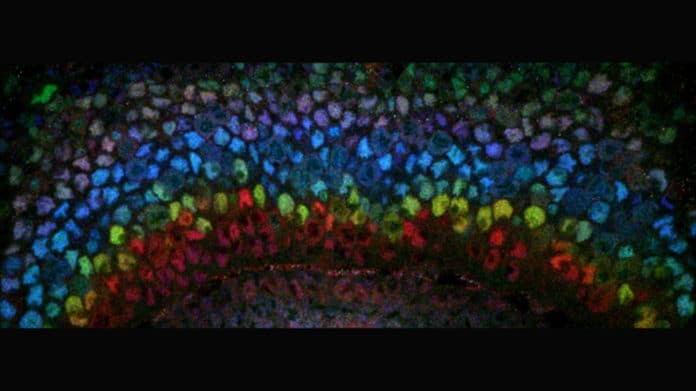The human brain consists of almost 80 billion neurons that differ in function, form, and connectivity with other neurons. Due to this complexity, the brain can perform multiple complex tasks.
Scientists have identified several types of neurons, but they do not know how this complexity arises during the brain’s development.
Claude Desplan, Silver Professor of Biology at NYU and the study’s senior author, said, “Knowing how the human brain develops could allow us in the future to repeat these developmental processes in the lab to generate specific types of neurons in a Petri dish—and potentially transplant them inpatients—or to trigger neuronal stem cells in living organisms to generate and replace missing neurons.”
Studying the human brain is an incredibly complex endeavor. That’s why scientists depend on model organisms, such as mice and flies, to explore the intricate mechanisms involved in the brain’s processes.
In a new study, scientists at New York University have identified the complete series of 10 factors that regulate the development of brain cell types in the visual system of fruit flies—including in what order these neurons develop.
Temporal patterning is how neural stem cells produce different neurons over time. By expressing different molecules—termed temporal transcription factors, or tTFs—that regulate the expression of specific genes in each window of time, neural stem cells produce different neurons.
Scientists studied the brains of the fruit fly Drosophila to uncover the complete set of tTFs needed to generate the roughly 120 neuron types of the medulla, a specific brain structure in the visual system of flies. Using mRNA sequencing, they obtained the transcriptome of more than 50,000 individual cells that were then grouped into most of the cell types present in the developing medulla.
Focusing on neural stem cells, scientists identified the complete set of tTFs that define the different windows of time in this brain region and the genetic network that controls the expression of these different tTFs that allow this temporal cascade to progress.
One of the study’s lead authors, Nikolaos Konstantinides, said, “Several tTFs had been previously identified in the brain’s visual system using available antibodies; we have now identified the comprehensive series of 10 tTFs that can specify all the neuron types in this brain region.”
Scientists later pinpointed the genetic interactions that allow the temporal cascade to progress and how this progression relates to the “birth order” of all neurons in the medulla, linking specific temporal windows with the generation of particular neurons. This cascade is essential for generating complete neural diversity of brain regions in a stereotypical order.
Isabel Holguera, a postdoctoral fellow in NYU’s Department of Biology and one of the study’s co-first authors, said, “Impairment of the temporal cascade progression leads to reduced neuronal diversity, hence altering brain development.”
Scientists studied the initial process of neural stem cells maturing into neurons. This stage is known as differentiation. This process for fly and human cortical neurons is almost similar, with identical gene expression patterns during stages of differentiation.
Co-first author Anthony Rossi said, “Our findings suggest that understanding the mechanisms of neuron development in flies can generate insight for the equivalent process in humans.”
Journal Reference:
- Konstantinides, N., Holguera, I., Rossi, A.M. et al. A complete temporal transcription factor series in the fly visual system. Nature (2022). DOI: 10.1038/s41586-022-04564-w
